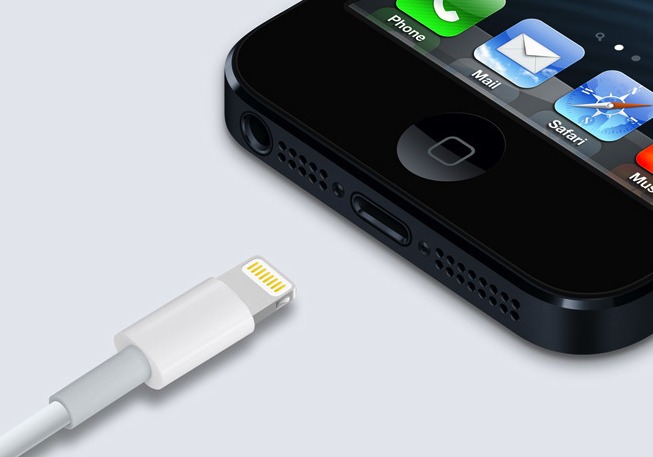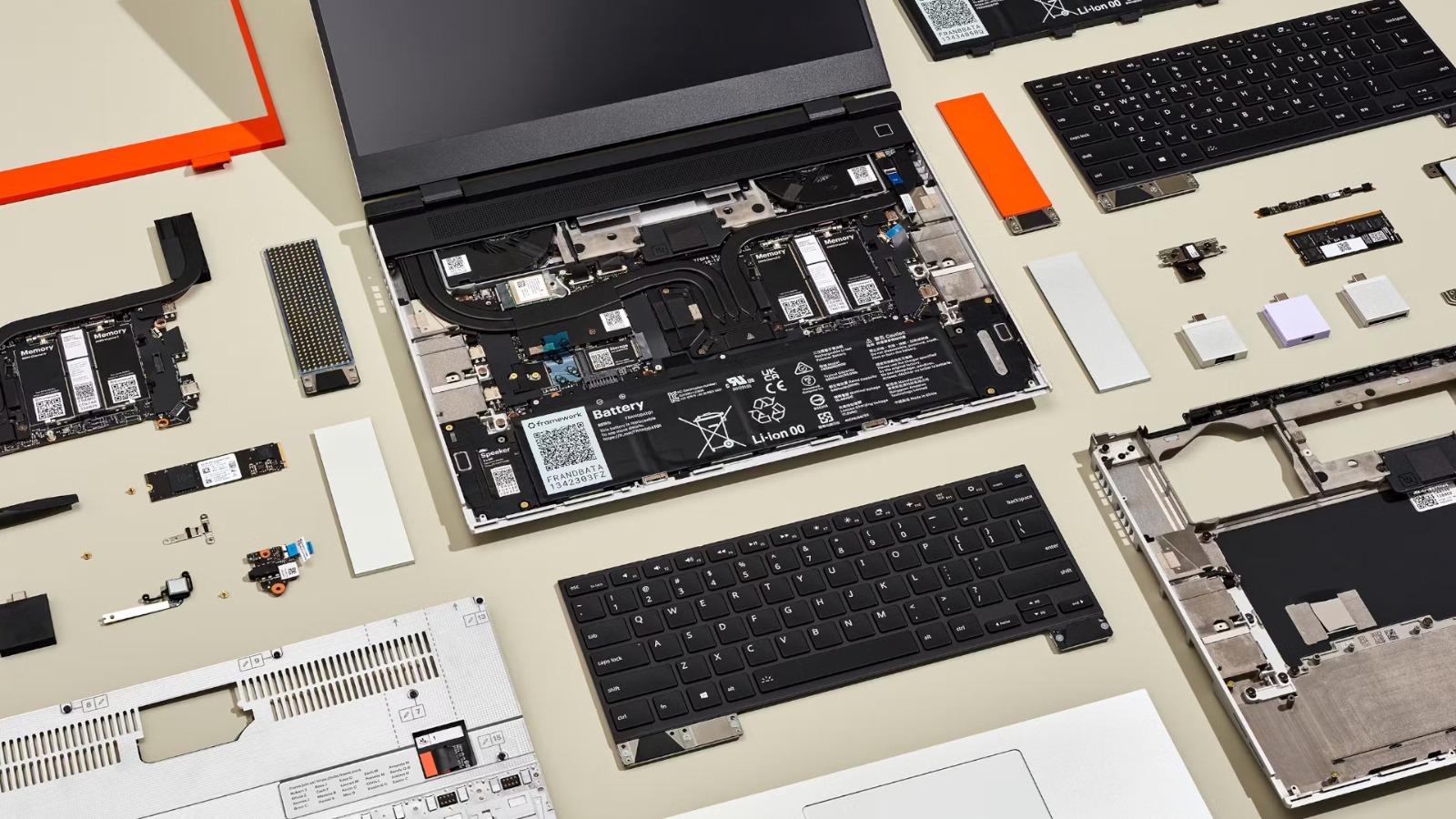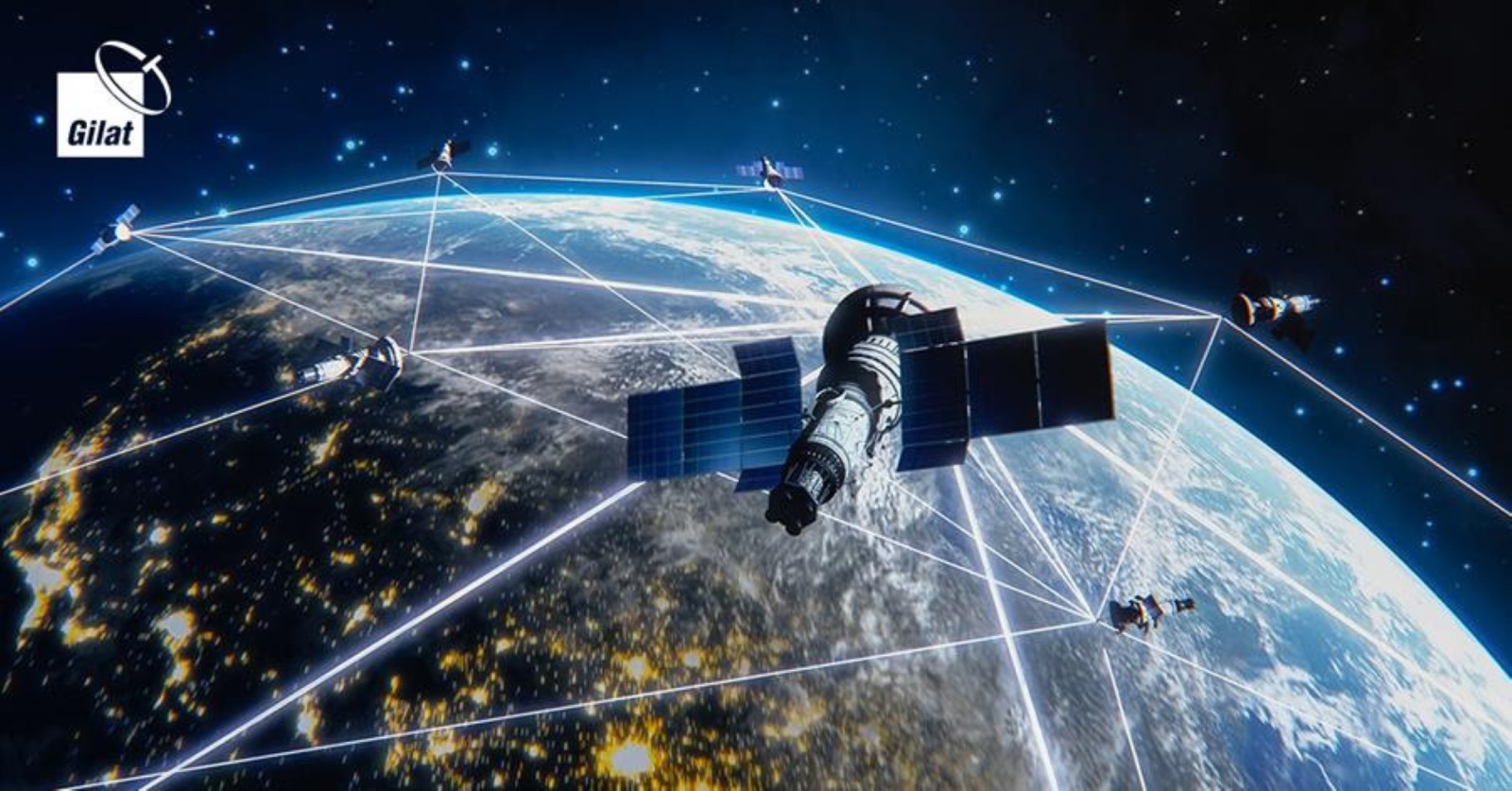
The Death of the Charging Port: How Wireless Power Is Taking Over.
“As technology evolves, the traditional charging port is rapidly becoming obsolete. With advancements in wireless power, from smartphones to electric vehicles, devices can now recharge effortlessly without cables. This shift promises greater convenience, durability, and sustainability, heralding a future where power flows invisibly, seamlessly integrating into our daily lives and eliminating the clutter and limitations of wired connections.”
✨ Raghav Jain

Introduction
In just over a decade, the way we power our devices has transformed dramatically. We’ve gone from tangled cords and clunky adapters to sleek wireless charging pads that promise a cable-free future. Today, the “death of the charging port” is no longer a futuristic concept — it’s becoming a technological inevitability. Smartphone giants like Apple, Samsung, and Xiaomi are already leading this revolution, developing devices that rely solely on wireless energy transfer. The era of plugging in your phone may soon come to an end.
This article explores the science behind wireless power, its evolution, the key technologies driving it, and what a truly wireless future means for consumers, the environment, and innovation itself.
1. The Origins of Wireless Power: A Dream Over a Century Old
The concept of wireless power isn’t new — it dates back to the late 19th century when Nikola Tesla envisioned transmitting electricity through the air. Tesla’s Wardenclyffe Tower, built in 1901, was designed to send electrical energy without wires across long distances. Although his project was never completed due to funding issues and technical challenges, his dream planted the seeds for today’s wireless charging technology.
Fast forward to the 21st century, and Tesla’s ideas have come to life through electromagnetic induction — the foundation of wireless charging. The same principles that power your electric toothbrush or smartwatch today can, in theory, power entire rooms, cars, and cities without a single cable.
2. How Wireless Charging Works
Wireless charging relies primarily on inductive charging, a process that transfers energy between two coils — one in the charger and one in the device — via an electromagnetic field. When the charging pad generates an alternating electromagnetic field, the receiver coil in the device converts that energy into electrical current, recharging the battery.
There are three main types of wireless power transmission in use today:
- Inductive Charging:
- Short-distance transfer (a few millimeters).
- Most common in smartphones, smartwatches, and earbuds.
- Requires physical contact with a charging pad (like Qi chargers).
- Resonant Charging:
- Uses magnetic resonance to extend the range up to a few centimeters or even meters.
- Can charge multiple devices simultaneously at different power levels.
- Used in some furniture-integrated chargers and automotive systems.
- Radio Frequency (RF) and Laser Charging:
- Transfers energy through radio waves or laser beams.
- Enables charging from several feet away.
- Still under development but holds enormous potential for IoT devices and wearables.
These systems are rapidly evolving, aiming to make charging as effortless and invisible as Wi-Fi.
3. The Industry Shift Toward Portless Devices
Tech companies are preparing for a portless future, where no cables are needed for charging, data transfer, or audio connectivity.
Apple’s decision to remove the headphone jack from the iPhone in 2016 was a pivotal moment — it signaled that the company was ready to simplify design and push consumers toward wireless solutions. Now, with the MagSafe system and rumors of a completely portless iPhone, it’s clear that Apple aims to eliminate physical connectors altogether.
Samsung, Xiaomi, and Huawei are not far behind. Xiaomi’s Mi Air Charge technology promises true over-the-air charging, capable of powering devices several meters away using millimeter-wave technology and beamforming. Meanwhile, companies like Energous, Ossia, and Wi-Charge are pioneering far-field wireless charging solutions that could keep your gadgets powered automatically as long as you’re within range of a transmitter.
This collective push by the tech industry suggests one thing — the charging port’s days are numbered.
4. Advantages of a Portless Future
The death of the charging port isn’t just about convenience; it offers a host of advantages that extend to consumers, manufacturers, and even the environment.
a. Better Durability and Design
Without charging ports, devices can be completely sealed — making them dustproof, waterproof, and more durable. This not only enhances longevity but also reduces repair costs due to corrosion or port damage.
b. Convenience and Automation
Imagine never needing to plug your device in again. Your phone charges whenever it’s placed on a table, your smartwatch charges while you sleep, and your car’s battery recharges as it’s parked in your garage. Wireless power makes this possible, simplifying daily routines.
c. Enhanced Aesthetics
Manufacturers can design sleeker and thinner devices without needing to accommodate charging ports. This leads to a more seamless, minimalist aesthetic.
d. Reduced E-Waste
Fewer cables mean less electronic waste. Since millions of charging cords are discarded annually, wireless power can significantly reduce environmental impact.
e. Universal Compatibility
With standards like Qi, wireless charging mats can charge multiple devices — from phones and earbuds to wearables — regardless of brand.
5. The Challenges and Limitations
While the benefits are enticing, wireless power still faces several technological and practical hurdles before it can completely replace cables.
a. Charging Speed
Wireless charging is often slower than wired charging. While wired fast chargers can deliver 100W or more, most wireless chargers top out at 15W–50W, though improvements are ongoing.
b. Energy Efficiency
Wireless charging wastes more energy as heat, making it less efficient than wired methods. This inefficiency could become problematic at scale, especially when powering large devices.
c. Cost and Compatibility
Wireless charging systems can be expensive to manufacture, and compatibility issues between brands and standards still exist — although the Qi2 standard introduced in 2024 aims to unify the market.
d. Environmental Concerns
The energy loss during wireless power transfer means more electricity is consumed overall, which could counteract some of the eco-benefits unless efficiency improves.
e. Safety and Interference
Far-field charging methods using RF or lasers raise potential concerns about radiation exposure and signal interference, which must be carefully regulated.
6. Beyond Smartphones: Wireless Power in the Real World
The future of wireless power extends well beyond your smartphone or smartwatch. Several industries are embracing it:
a. Electric Vehicles (EVs)
Wireless charging pads embedded in parking spots can charge electric vehicles automatically. Companies like WiTricity and Plugless Power are developing inductive EV charging systems that can top up your car without plugging in a cable.
b. Smart Homes and IoT Devices
Imagine your home filled with sensors, cameras, and appliances that never need batteries replaced or cords attached. Wireless power could keep all your smart devices running continuously.
c. Medical Devices
Wireless charging eliminates infection risks caused by exposed ports in medical implants like pacemakers and insulin pumps. It also allows for continuous power without invasive procedures.
d. Drones and Robots
Wireless charging stations could allow autonomous drones or robots to recharge themselves automatically, improving efficiency and reducing downtime in logistics, surveillance, and manufacturing.
7. The Role of Standardization and Innovation
The Wireless Power Consortium (WPC) and other industry bodies are critical in setting universal standards that ensure safety, interoperability, and efficiency. The introduction of the Qi2 standard — inspired by Apple’s MagSafe — represents the next generation of reliable wireless charging. It uses magnetic alignment to improve power transfer efficiency and prevent overheating, potentially addressing two of the biggest challenges in wireless charging today.
At the same time, innovations in resonant and far-field charging are expanding what’s possible. Wi-Charge’s infrared power beams and Ossia’s Cota RF charging demonstrate that truly wireless environments — where power flows like Wi-Fi — are within reach.
8. The Environmental Perspective
Cables and adapters contribute millions of tons of e-waste each year. With wireless charging integrated into public spaces, furniture, and vehicles, we could significantly cut down this waste. However, it’s important that the technology’s energy efficiency improves, or else the overall power consumption might offset its sustainability benefits.
Future systems that rely on renewable energy sources, such as solar-powered transmitters, could make wireless power both convenient and environmentally responsible.
9. The Road Ahead: The Next Decade of Wireless Power
By 2030, experts predict that nearly 80% of personal electronics will support some form of wireless power. With charging pads built into tables, cars, and even walls, users will simply move through spaces where their devices charge automatically.
As technology progresses, the vision of a fully wireless world — where laptops, wearables, and even household appliances are powered without cords — may finally be realized. For consumers, this means an end to cable clutter and a step toward seamless integration of energy and design.
The era of charging ports is rapidly approaching its end as wireless power technologies evolve and gain mainstream adoption, transforming the way we interact with and power our devices, and signaling a significant shift in both design philosophy and daily convenience; the concept of wireless energy is far from new, tracing back to Nikola Tesla in the late 19th and early 20th centuries, whose ambitious Wardenclyffe Tower project sought to transmit electricity through the air over long distances, although it never reached fruition due to technical and financial limitations, yet the fundamental dream of untethered power has persisted and is now becoming a reality through the principles of electromagnetic induction and magnetic resonance that form the backbone of modern wireless charging; today, smartphones, smartwatches, earbuds, and even certain laptops use inductive charging, where a coil within a charging pad generates an alternating electromagnetic field that induces an electric current in a receiving coil inside the device, efficiently converting energy without a physical connection, while more advanced technologies such as resonant charging allow energy transfer over slightly greater distances, supporting multiple devices at varying power levels, and emerging radio frequency and laser-based systems hint at a future where devices could charge autonomously from several meters away, enabling a truly wireless environment reminiscent of science fiction, and these developments are being driven by industry giants such as Apple, Samsung, Huawei, and Xiaomi, with Apple’s removal of the headphone jack in 2016 acting as a pivotal moment, demonstrating that the company was ready to embrace wireless solutions, a trend reinforced by the MagSafe system and ongoing speculation about completely portless iPhones, while other companies like Xiaomi are exploring over-the-air charging technologies such as Mi Air Charge, using millimeter-wave beamforming to deliver power remotely, and specialized companies like Energous, Ossia, and Wi-Charge are pioneering long-range wireless power transfer that could keep multiple devices charged automatically within a given space; the advantages of a portless future extend beyond mere convenience, as eliminating charging ports allows devices to be sealed against dust and water, significantly improving durability and reducing repair costs, while also offering a cleaner, minimalist aesthetic that aligns with contemporary consumer preferences, and universal wireless charging standards, especially Qi and the newer Qi2 standard, promise compatibility across brands, reducing the need for multiple cords, while also contributing to sustainability by potentially cutting down on electronic waste generated from discarded adapters and cables, yet challenges remain, including slower charging speeds compared to wired fast chargers, inefficiencies resulting in energy loss as heat, higher production costs, potential safety concerns with far-field transmission methods, and the need for rigorous standardization to ensure devices from different manufacturers work seamlessly together; beyond personal electronics, wireless power is poised to revolutionize other industries, with electric vehicles benefiting from inductive charging pads embedded in parking spaces, autonomous drones and robots being able to recharge themselves without human intervention, medical devices like pacemakers and insulin pumps achieving safer, continuous operation without invasive connections, and smart homes seeing a proliferation of IoT devices powered continuously without battery replacements or cords, all contributing to a vision of a fully connected and automated environment where energy flows as seamlessly as Wi-Fi signals, yet for this vision to be truly sustainable, improvements in efficiency and integration with renewable energy sources will be crucial, as energy loss during wireless transmission could otherwise offset some of the ecological benefits; industry-wide collaboration through the Wireless Power Consortium and adoption of unified standards like Qi2 are accelerating this transformation, as magnetic alignment technologies and advanced coil designs enhance charging efficiency, reduce heat, and ensure safety, while innovative research into far-field charging demonstrates that a future where our devices charge passively in our homes, offices, and public spaces is achievable within the next decade; with predictions suggesting that by 2030, the majority of personal electronics, from smartphones to wearables and even laptops, will adopt some form of wireless power, consumers can expect a lifestyle free from tangled cords, constantly searching for outlets, and damaged charging ports, ushering in an era where our interaction with technology is more seamless, intuitive, and aesthetically pleasing than ever before, marking the death of the traditional charging port and the birth of a new paradigm in energy accessibility, convenience, and design, while posing interesting questions for the environment, energy policy, and consumer habits, as the convenience of untethered charging could dramatically influence how, when, and where we use our devices, and while some technical hurdles remain, such as optimizing energy efficiency, reducing environmental impact, and ensuring safety in far-field transmissions, the trajectory is clear: wireless power is not just an incremental improvement but a fundamental reimagining of how devices are powered, signaling a future where cables are an anachronism and our devices charge automatically, unobtrusively, and continuously, ultimately fulfilling the vision that Nikola Tesla imagined over a century ago, and promising a world where the once-essential act of plugging in becomes a relic of the past, replaced by invisible, efficient, and universal wireless energy that integrates effortlessly into our daily lives, transforming technology from a tethered utility into a seamlessly flowing, omnipresent resource.
The death of the charging port is no longer a distant vision but an emerging reality as wireless power technologies evolve at an unprecedented pace, fundamentally reshaping the way we interact with our devices and paving the way for a future where the simple act of plugging in becomes obsolete, a transformation rooted in a history that dates back over a century to Nikola Tesla, whose experiments with wireless electricity and the construction of the Wardenclyffe Tower demonstrated the possibility of transmitting energy through the air, a concept that was ahead of its time and faced insurmountable technical and financial challenges but inspired generations of innovators to pursue the dream of untethered power; today, that dream has materialized in multiple forms, with inductive charging, resonant charging, and emerging radio frequency and laser-based charging methods forming the backbone of the modern wireless ecosystem, where inductive charging, the most common and widely adopted technology, enables energy transfer between a coil in the charging pad and a receiver coil in the device via electromagnetic induction, allowing smartphones, smartwatches, earbuds, and even certain laptops to recharge without the inconvenience of cables, while resonant charging extends this principle over slightly larger distances, allowing multiple devices to be charged simultaneously and efficiently, and experimental far-field charging methods using RF or laser beams promise to break the last barriers of distance, enabling devices to be powered autonomously as long as they remain within range of a transmitter, and this shift is being driven by leading technology companies such as Apple, Samsung, Xiaomi, and Huawei, with Apple’s removal of the headphone jack in 2016 signaling a decisive move toward wireless solutions, a trend reinforced by MagSafe technology and ongoing speculation about completely portless iPhones, while Samsung, Xiaomi, and Huawei are investing heavily in next-generation wireless charging solutions, with Xiaomi’s Mi Air Charge technology demonstrating the ability to beam power across several meters using millimeter-wave beamforming and sensor-assisted targeting, and companies like Energous, Ossia, and Wi-Charge pushing the boundaries of long-range wireless power to keep multiple devices charged automatically within a room or even larger spaces, offering a tantalizing glimpse into a future of seamless energy integration; the benefits of eliminating charging ports extend beyond mere convenience, including improved device durability through the elimination of vulnerable physical connectors that are prone to dust, water, and corrosion, enhanced aesthetics as devices can be designed thinner and sleeker without accommodating ports, and greater sustainability as the reduction in cables and adapters could significantly reduce electronic waste, particularly when combined with universal wireless standards like Qi and the newly introduced Qi2, which aim to unify charging protocols across brands and power levels, improving efficiency and consumer compatibility while mitigating the clutter and confusion associated with proprietary cables, yet despite these advantages, several challenges remain, including slower charging speeds compared to wired fast charging, as most wireless chargers operate in the range of 15W to 50W while wired alternatives can exceed 100W, energy inefficiencies that result in heat loss, higher manufacturing costs, and potential safety concerns related to far-field transmission methods such as RF and lasers, which require careful regulation and adherence to strict standards to prevent interference and ensure safe exposure levels; beyond personal electronics, wireless power is poised to revolutionize multiple industries, including electric vehicles, where inductive charging pads embedded in parking spaces allow cars to charge automatically without human intervention, drones and robots that can autonomously recharge themselves without downtime, smart homes where IoT devices remain powered continuously without battery replacement, and medical applications such as pacemakers, insulin pumps, and other implants that can be charged safely without invasive procedures, thus enhancing both convenience and safety, and as these technologies mature, we can envision environments where charging is as ubiquitous and effortless as Wi-Fi connectivity, with power transmitted invisibly and continuously to devices embedded throughout our homes, offices, and public spaces; however, for wireless power to achieve its full potential, efficiency improvements are critical, as energy loss during transmission could offset environmental benefits, and integration with renewable energy sources will be essential to make this approach sustainable, while standardization initiatives like the Wireless Power Consortium’s Qi2 standard play a key role in ensuring interoperability, safety, and optimal performance across devices, with magnetic alignment and improved coil designs addressing common issues such as overheating and misalignment that previously hindered adoption, and early successes in far-field charging technology by companies such as Ossia and Wi-Charge demonstrate that wireless power could eventually become ubiquitous, supporting multiple devices simultaneously at varying distances and power levels without user intervention; predictions indicate that by 2030, the majority of personal electronics, from smartphones and tablets to laptops, wearables, and beyond, will incorporate wireless charging as a primary power method, drastically reducing the reliance on physical ports, eliminating cable clutter, and simplifying user interaction with technology, while also promoting a minimalist aesthetic and enhancing durability, yet the transition will require continued innovation in speed, efficiency, and safety, careful attention to environmental impact, and widespread consumer adoption, ultimately signaling a profound shift in how we design, power, and interact with electronic devices, fulfilling Nikola Tesla’s century-old vision of a world powered wirelessly, and marking the beginning of a future where energy is seamlessly transmitted through the environment, devices charge effortlessly as part of daily life, and the traditional charging port becomes a relic of the past, leaving behind a cleaner, more convenient, and technologically advanced ecosystem that redefines connectivity, mobility, and user experience while reshaping the landscape of personal electronics, automotive technology, medical devices, smart homes, and industrial automation, creating an era where power flows invisibly, continuously, and universally, integrating seamlessly into the spaces we inhabit and the devices we rely on, ultimately ensuring that the death of the charging port is not just a technical milestone but a transformative step toward a fully wireless, efficient, and intelligent world that fundamentally changes the way we live, work, and interact with technology.
Conclusion
The charging port’s decline marks a major milestone in technological evolution. From Tesla’s early dreams to modern Qi-enabled devices, wireless power has transformed from theory to everyday reality.
Its benefits — convenience, durability, aesthetics, and sustainability — are propelling industries toward a cord-free future. Yet, challenges such as efficiency loss, slower charging speeds, and high manufacturing costs must still be addressed.
Ultimately, the death of the charging port isn’t the end of connectivity; it’s the beginning of a smarter, cleaner, and more integrated world where power flows as effortlessly as data. The transition won’t happen overnight, but the momentum is unstoppable. Just as we once said goodbye to headphone jacks, we’re now preparing to unplug from charging ports — for good.
Q&A Section
Q1: What is wireless charging and how does it work?
Ans: Wireless charging uses electromagnetic induction to transfer energy between two coils — one in the charger and one in the device — without physical contact. The charging pad generates a magnetic field that the device converts into electrical energy to charge its battery.
Q2: Why are companies moving toward portless devices?
Ans: Manufacturers are removing charging ports to improve water resistance, enhance durability, reduce e-waste, and create more elegant, streamlined designs. It also encourages adoption of universal wireless standards.
Q3: Is wireless charging as fast as wired charging?
Ans: Currently, no. Wired fast charging can deliver up to 100W or more, while wireless chargers typically range from 15W–50W. However, innovations like Qi2 and improved coil efficiency are closing the gap.
Q4: Can wireless power work over long distances?
Ans: Yes, emerging technologies such as RF and laser-based charging can transfer energy several feet away. Companies like Ossia and Wi-Charge are developing systems that can power multiple devices in a room simultaneously.
Q5: Are there environmental benefits to wireless power?
Ans: Yes. Wireless charging reduces the need for cables and adapters, cutting down on e-waste. However, energy efficiency must improve to ensure the environmental gains outweigh the higher energy usage.
Similar Articles
Find more relatable content in similar Articles

The Death of the Charging Port..
“As technology evolves, the tr.. Read More

Modular Laptops: Build, Upgrad..
Modular laptops are transformi.. Read More

Ethical AI: Can Machines Ever ..
Exploring the challenges and p.. Read More

Space tech for Earth problems:..
Leveraging the power of satell.. Read More
Explore Other Categories
Explore many different categories of articles ranging from Gadgets to Security
Smart Devices, Gear & Innovations
Discover in-depth reviews, hands-on experiences, and expert insights on the newest gadgets—from smartphones to smartwatches, headphones, wearables, and everything in between. Stay ahead with the latest in tech gear
Apps That Power Your World
Explore essential mobile and desktop applications across all platforms. From productivity boosters to creative tools, we cover updates, recommendations, and how-tos to make your digital life easier and more efficient.
Tomorrow's Technology, Today's Insights
Dive into the world of emerging technologies, AI breakthroughs, space tech, robotics, and innovations shaping the future. Stay informed on what's next in the evolution of science and technology.
Protecting You in a Digital Age
Learn how to secure your data, protect your privacy, and understand the latest in online threats. We break down complex cybersecurity topics into practical advice for everyday users and professionals alike.
© 2025 Copyrights by rTechnology. All Rights Reserved.